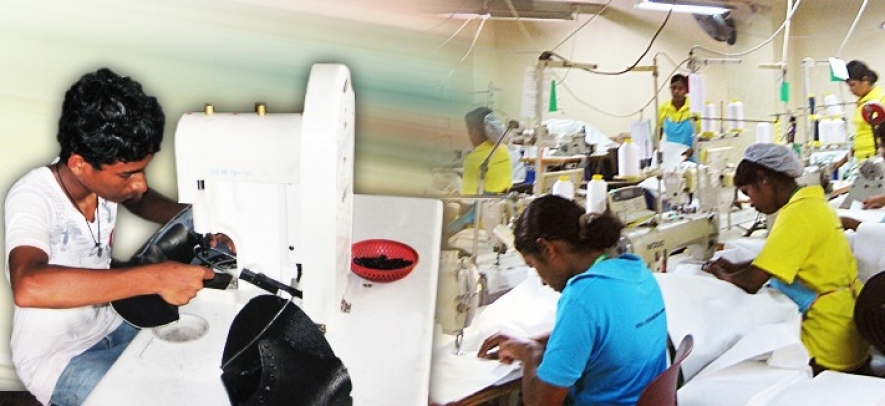Most important aspect of an Economic Census is to identify the business activities that the establishments engaged in. The Listing of the Economic Census reports that the country’s economy comprises of around 1.02 million establishments. This Census was conducted throughout the country covering all the economic activities which were operative during the census period encompassing industry, trade, construction, and service sectors in line with the International Standard Industrial Classification (ISIC revision IV). However, the economic activities, which were operated for the sole purpose of own consumption, were excluded at this exercise.
The number of persons engaged in a business is one of the most important variables used by the economists to measure the shape and the size of an economy. Further, Employment data reflects the overall picture of an economy. Number of persons engaged is an employment indicator widely used by many countries as a proxy to estimate output, to identify informal businesses, to define SMEs, and also to measure size, pattern and other behaviors of an economy.
Identifying Small and Medium Enterprises (SMEs)
SMEs plays a vital role in almost all the economies in the world, but especially to the developing economies like Sri Lanka. It contributes largely to the GDP by participating in the mainstream economy, becoming source of income to a substantial portion of the population by providing employment opportunities. On the other hand SMEs serves as a nursery for large enterprises of the future, as most of large enterprises right now originated as SMEs in the past.
Currently, Sri Lanka doesn’t have a generally accepted criteria for SMEs, instead different agencies use deferent criteria based on their objectives and there is no consistency between them. Identifying SMEs on commonly acceptable criteria was a long felt need of the country, and number of forums were organized and different surveys were conducted by different agencies in view of achieving that goal.
The Listing operation of Economic Census conducted in 2013/14 provided a strong base to define SMEs logically which may be acceptable to all the agencies. Turnover, value of assets and number of persons engaged were identified as key variables in defining SMEs and listing forms were designed encompassing those variables too. The final data of the Listing operation was plotted and analysed against each variable identified to define SMEs, but the distribution of establishments against the number of persons engaged was proved to be the most reliable and consistent variable in defining SMEs of the country. Further, the Industrial & Construction Sector, Trade Sector, and the Services sector gave rise to substantially different distributions, and as such different thresholds were identified for each of those sectors to define Micro, small, Medium and large establishments as follows.
| Major Economic Sector | SME Groups | Criteria (Number of Persons Engaged) |
|
Industry and Construction |
Micro Small Medium Large |
1 to 4 5 to 24 25 to 199 200 and above |
|
Trade |
Micro Small Medium Large |
1 to 3 4 to 14 15 to 34 35 and above |
|
Services |
Micro Small Medium Large |
1 to 4 5 to 15 16 to 74 75 and above |
Key Indicators on Industry, Trade and Services
Distribution of SMEs and Persons Engaged
The number of economic activities listed at the listing phase was 1,019,681 of which 71,126 small scale establishments and 10,405 are medium scale establishments. The distribution of these units by sector is given in following table.
Employment
Number of persons engaged in, is considered as the employment of the establishment listed. It comprised employees, self-employed persons, employers, active partners, and unpaid family workers who engaged in the economic activity. This listing operation reveals that around 3 million people are engaged in industry trade and services sector of the country.
Registration
Establishments can be registered at a single institute or at multiple institutions based on their objectives and requirements. The results of the economic census reveals that though business registration is in existence at the Divisional Secretariats in the country, 45% of the micro enterprises and 10% of the small enterprises are not registered. In Sri Lanka, on average 58% of the establishments engaged in economic activities were reported to be not registered.
Legal Ownership
Legal status of the economic activities depicts some indication about the formality, informality, and shape of an overall economy. This Census reveals that over 90% of the economic activities in the country are of the category sole ownership.
Female Entrepreneurs
The number of Women entrepreneurs and Women Decision makers in an economy is an important indicator for gender related policies. In Sri Lanka, 25%of the establishments are run by women entrepreneurs or decision makers, while its percentage in the rural areas (35%) is significantly higher than that of the urban areas (28%).
Key Indicators




















